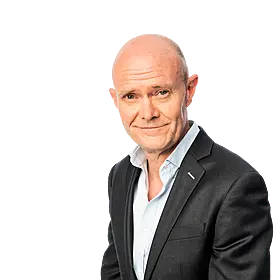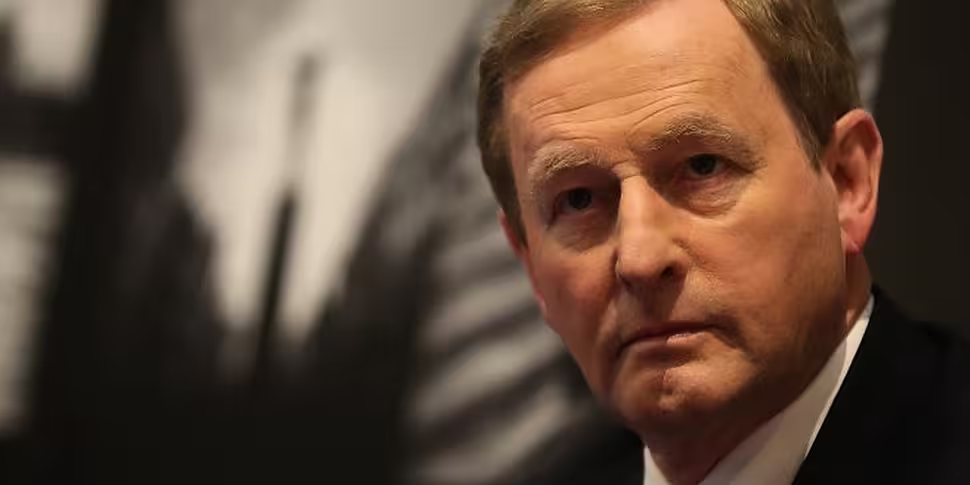As Enda Kenny steps back from his leadership role in Fine Gael, he leaves a conflicted economic legacy.
He's been a permanent fixture at (almost daily) job announcements from tech and pharma firms in recent times. However, it remains to be seen if the 'recovery' or his party's management of Ireland's economic crisis, and disastrous 2016 election campaign, will leave a more lasting impression.

In 2011 Fine Gael promised a better deal and rewards from Brussels and Frankfurt as Ireland plodded along the bailout roadmap set by the previous Government.
Although some concessions were made such as an interest rate cut on our bailout loans and the extension of the period in which the country will pay off debt related to the collapse of Anglo Irish Bank - Ireland was ultimately not given a special deal on its bank debt.
Selling the recovery
Under his leadership, a protest movement against austerity grew - anchored around his Government's botched attempt at introducing water charges.
His party tried to sell a 'Recovery' narrative to the Irish public in 2016 but it was broadly rejected, despite the country delivering 'the highest growth rate in the EU.'
During the election postmortem, it was reported that the 2016 Fine Gael 'Recovery' message had been inspired by the success of the Conservative Party's message, "let's stay together on a road to a stronger economy" in the UK's general election.

The slogan was a flop and was met with the rebuttal of 'where's my recovery' from large portions of the population. As the campaign developed, shortfallings in public services dominated the debate, not increases in the country's GDP.
Tellingly, the slogan was altered to 'Bring the recovery home,' by Leo Varadkar in Dublin West. The front-runner in the Fine Gael leadership race also commented that he "didn’t sign off on" the party's slogan.
Fine Gael went with "Keep the Recovery Going" ahead of "Making Work Pay" and "Stability Versus Chaos."

One of the reasons why the message failed on the doorstep is that many households have been slow to feel the benefits of Ireland's economic renaissance.
A poll in the Sunday Independent last weekend, almost on the eve of Mr Kenney's exit, showed that while 38% of people said they believe the economic situation will improve over the next year, 19% believe there's will deteriorate and 37% believe their circumstances will remain unchanged.

Growth
The Mayoman's second term also coincided with the coining of the phrase 'Leprechaun economics' after Ireland recorded a 26% economic growth rate in 2016. This happened because our growth figures were distorted by a few large firms (primarily in aviation) moving their balance sheets here.
At the time Mr Kenny conceded at the numbers did not "reflect accurately what is happening in the Irish economy."
This was not the first time that the connection between Ireland's growth rate and the Irish economy has been called into question.
Both the Irish Fiscal Advisory Council (IFAC) and the International Monetary Fund (IMF) raised questions over the significance of Ireland's 'best in class' headline growth figures in the past because of practices such as 'contract manufacturing' (economic activity which only takes place in Ireland on paper, often for tax avoidance purposes).
Dr Donal Donovan of the IFAC said in late 2014 that Irish growth figures should be taken with a "pinch of salt," which might be something that Fine Gael strategists should bear in mind when designing their next campaign.

Turning a corner
Enda Kenny inherited a basket case economy in 2011 which has stabilised.
The country ranks high in most international standard of living indexes - it was 17th in the OECD's 'Better Life Index' last year, one place behind the UK and one ahead of France. Unemployment has dropped from almost 15% to 6.2% under his watch.
After a sustained period of austerity, Irish economic policy turned a corner in late 2015 when Kenny and Co. unveiled a €3bn giveaway pre-election budget.
But while 'the recovery' roles on in 2017 and new shiny glass towers rise along the Liffey as Ireland haggles for post-Brexit business, Ireland's dysfunctional property market is the economic story of the year, not the continued economic upswing.
Plans
After Finna Fail's giveaway Budget ahead of the 2007 General Election, the then opposition leader, Enda Kenny asked, "What have the people got for their billions?"
He continued: "They have got the reality of public life in Ireland in 2006, namely, waiting. They are waiting in their cars for hours on the way to and from work as happened this morning - two and a half hours from Lucan. They are waiting for hospital beds on lists that were promised to have been eliminated two years ago ... They are waiting on trolleys in accident and emergency units. They are waiting for criminals who are running loose to be caught. They are waiting for gardaí to show up on the beat and deal with escalating crime."

11 years later as he leaves office the traffic is still awful. In early 2017 the number of people on trolleys in hospitals around the country hit a record high. There's a rural crime epidemic, and Ireland ranks as one of the counties with the highest levels of shootings per capita in Europ after 194 shootings and 76 deaths last year.
Enda and Co. got the economy out of the red - but underlying problems remain, such as the 34,000 owner-occupied homes in arrears owing payments for two years or more.
Many households' economic situations are far from rosy. A Social Justice Ireland (SJI) report last summer found that 750,000 people are currently living in poverty - and 18% of adults doing so are employed.
Close to 60% of Irish households have to borrow money to be able to pay their household bills, according to a survey published by Switcher.ie in January of this year.
The seasonally adjusted youth unemployment rate was 12.9% last month.
Add in escalations in Ireland's property crisis, record levels of homelessness, on-going confusion over water charges, confusion over the EU's Apple Tax ruling, growing Brexit gloom and sustained Trump fear, and the recovery narrative is a significantly harder sell now as Kenny goes than it was when it failed 14 months ago.









